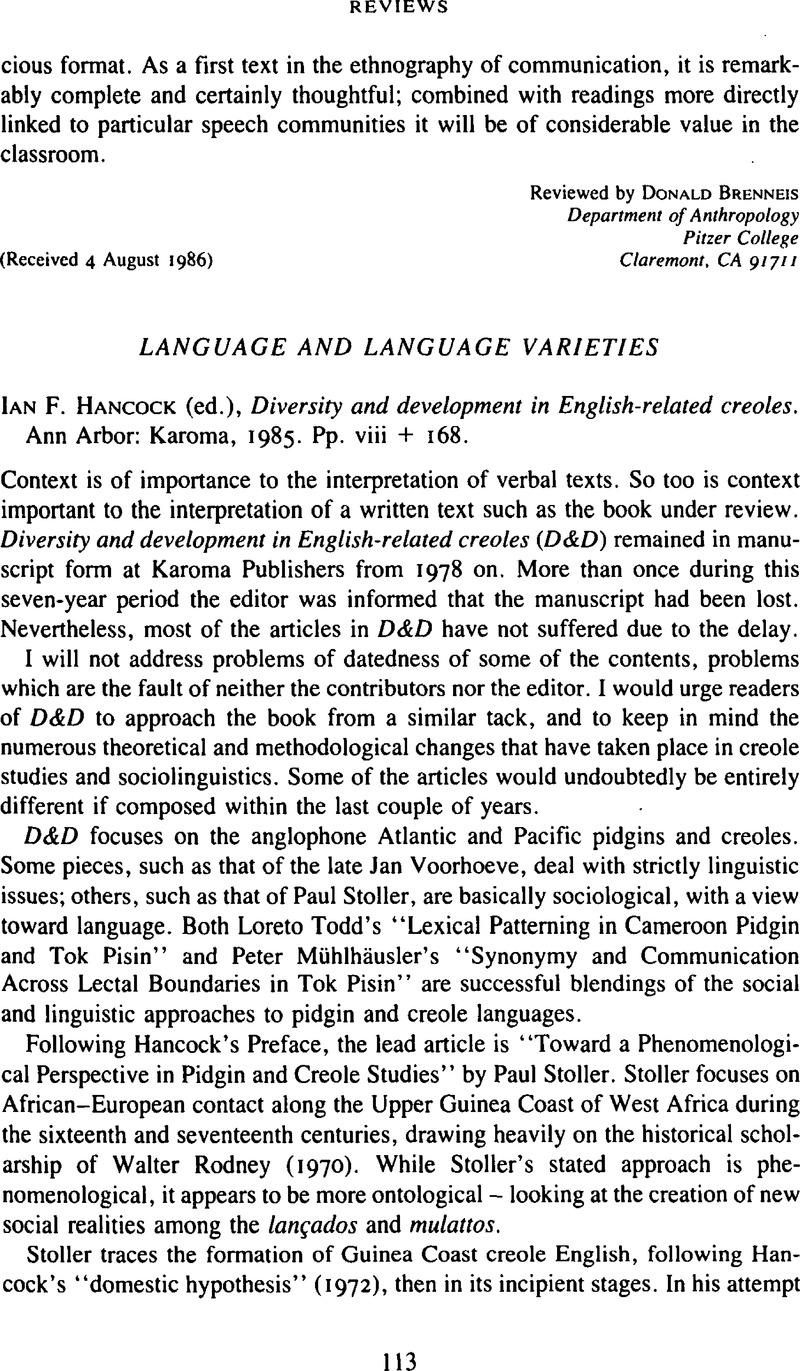Hancock, I. (
1985). The domestic hypothesis, diffusion, and componentiality: An account of Atlantic anglophone Creole origins. Paper presented at the Workshop on Universals vs. Substrata in Creole Genesis, The University of Amsterdam, April.
Google Scholar 